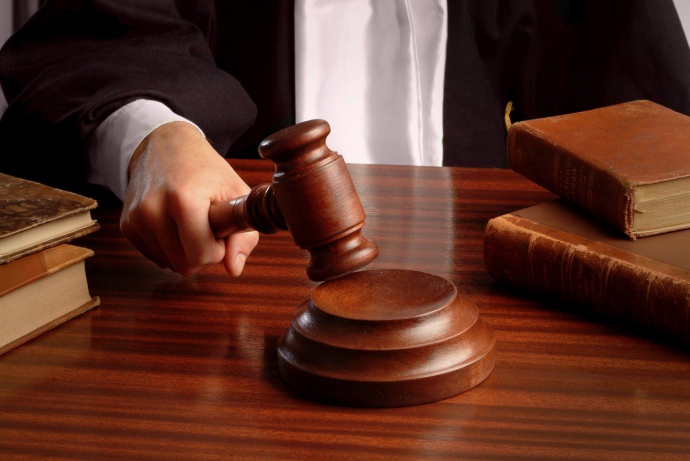I am studying in the third year of the State University of Economics and Technology.I specialize in contractual, economic and corporate law, in particular, I provide consultations and write articles.
During the proceedings in the civil process, there may be cases of violation of the norms of procedural legislation, which will hinder the effective implementation of the judicial process.
- Civil procedural law in order to stop such offenses provides for the possibility of applying legal coercion to those persons who commit them.
- The main features of procedural coercion measures include the fact that they are applied exclusively by the court to the circle of subjects that is clearly specified by the legislation, the procedural basis.
- The basis for their application is the presence of a corresponding resolution.
- At the same time, the use of coercive measures within the framework of civil proceedings may be relevant in the event that the participants in the court session violate the established rules, or illegally obstruct the conduct of the proceedings.
- The decision on the application of coercive measures will not affect the progress of the case and is not subject to appeal separately from the court decision.
Types of measures of procedural coercion:
1. Warning. If a person present in the courtroom (not necessarily a participant in a civil proceeding) violates the established rules of the courtroom procedure or fails to comply with the orders of the presiding judge, a warning may be issued to such a person. This measure is the least severe, but in case of repeated violation, the person is removed from the courtroom. This measure is applied by the judge issuing the relevant decision, which is not subject to appeal. Therefore, before attending a court session, you should familiarize yourself with the duties that are put forward to those present during the sessions, and already during the session, follow the orders of the presiding judge.
2. Removal from the courtroom. By applying this measure, the court aims to eliminate an obstacle to the implementation of judicial proceedings by removing a person who, by his actions, violates the established rules of conducting a court session. The result of the application is deprivation of the right to be present in the courtroom. This measure is applied by issuing a corresponding resolution and will cause more significant procedural consequences in comparison with the previous measure.
3. Temporary seizure of evidence. According to Art. 84 of the Code of Civil Procedure in some cases, the court may require evidence that is necessary to clarify the circumstances of the case. The person who has the proof is obliged to present it to the court. If there are valid reasons that exclude the possibility of presenting evidence, the court must be informed about this. In that case, if such messages were not received, or the reasons for not providing evidence will be recognized as invalid, then temporary withdrawal of the necessary evidence may be applied. The result of the application is the termination of the possibility of possession, use and disposal of the evidence. In the decree on the application of this measure, the court must specify: information about the person who possesses the evidence, a description of the evidence itself, which must be seized and examined, the reason for the seizure and the person to whom it is entrusted. It should be noted that the resolution will have the status of an executive document.
4. Evidence of the witness. A witness is a person who is aware of the circumstances directly related to the case. If the court summons a witness, the latter must appear and testify. In the case when the witness cannot come when summoned or give evidence in the format of a video conference, the court must be informed about this. Therefore, if the witness did not appear according to the summons that was duly served on him, and did not report the reasons for the non-appearance, the court may apply such a coercive measure as a pretext. In order to apply the measure, the court issues a decision, in which it specifies information about the witness to be subpoenaed, his place of residence, work or study, the grounds for applying the coercive measure, the place to which the witness and the persons entrusted with this must be delivered (employees of the National Police of Ukraine). Already during the execution of the pretext, the person to whom it is entrusted must acquaint the witness with the decision. Familiarization is carried out by appointment.
5. Fine. If a participant in a civil proceeding fails to fulfill his duties, avoids taking certain actions, abuses his rights, fails to comply with a court order, etc. - it is possible to apply a fine to such a participant. In connection with the application of this coercive measure, a corresponding decision is issued by the court, as will be the status of an executive document. If the participant in the process considers the application of a fine to him to be unjustified, he has the opportunity to appeal the decision in the appeal procedure. In the event that the participant in the process corrected the committed violations, provided the court with evidence that establishes the seriousness of the reasons for not fulfilling the duties or requirements of the court, then the decision on the application of the fine may be canceled by the court.
Representation of interests in court by a lawyer:
In order for the court not to have grounds for applying the above coercive measures, it is extremely important to familiarize yourself with and comply with your obligations, the list of which depends on the procedural status of the person.
A lawyer for court can help with this. A representative in court may be needed at any stage of the civil process, because the collection of evidence, the preparation of procedural documents that will meet all the requirements of the law, and reliable defence in court are the indispensable tools that will determine success in the civil process. A lawyer in court will perform a number of functions that will contribute to the comprehensive protection of his clients rights.

































